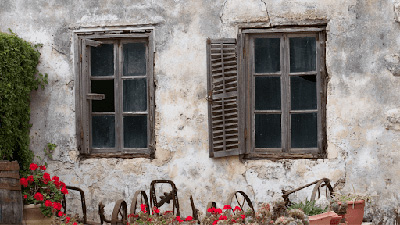
Glass windows are an essential design element to a home and the average house has eight. It’s hard to imagine a house without windows. The ability to look out of clear glass and enjoy a view is something we often take for granted. Need a bit of fresh air? No problem, just crack open the window. But home windows weren’t always like what we have now.
According to the Corning Museum of Glass, the “first glass created by humans can be dated to about 4,000 years ago.” This first glass, made by mixing sand, soda, and lime, is credited to crafters from Mesopotamia. While this glass was used to create vessels, art, and tools, many centuries would pass before glass windows would become common for homes.
Early Glass Production
Prior to the sixteenth century, home windows would be framed with timber or stone construction but feature an unglazed opening. The opening or window space would then be covered by paper, oiled cloth, or shutters. Glazed windows existed, but were for buildings of greater importance, not the common home.
The seventeenth century was a time of glass innovation:
- First glass factory in America built in 1608 (Jamestown, Virginia)
- Leaded glass invented by English craftsperson George Ravenscroft in 1674)
- Italian Renaissance influenced window shape: windows become taller and more narrow, divided into four sections
- Timber frames were common, but less visible, which allowed for a more expansive glazed area
- Crown glass was developed, leading to the introduction of the sash window
Window size standardization didn’t come into play until the eighteenth century and later. The four-section style gave way to a six-by-six design. These grid styles were popular for decades, but by the 1800s, Gothic influence brought more ornamental changes as did the continuing advancements in production and manufacturing. Home windows would see many changes over the next 200 years, from plate glass to laminated glass to float glass developed in the mid-twentieth century.
What About Stained Glass?
Stained glass windows historically were something found in churches. It’s been documented that stained glass windows existed in British monasteries from about 675 AD when the monastery of St. Peter was built. The use of stained glass windows in churches spread throughout the ages, and by the tenth century, these artisan-crafted windows could be found in religious buildings throughout Europe.
Development of Float Glass and its Importance
Float glass was developed by Sir Alastair Pilkington in 1959. Pilkington wanted a more efficient method for creating flat glass sheets. Float glass proved to be smooth, strong, and durable. Its manufacturing process creates less waste. Float glass is still an industry standard today, a glass that’s known for its clarity and flawlessness.
We’ve come a long way from the wavy, distorted window glass of centuries past. Today’s modern window glass not only offers clear views, but it’s designed to help improve energy efficiency within the home.
But even with modern improvements, window glass still needs to be cleaned regularly. Fortunately, United Window Cleaning can handle that for you. Contact us today to schedule your window cleaning.


